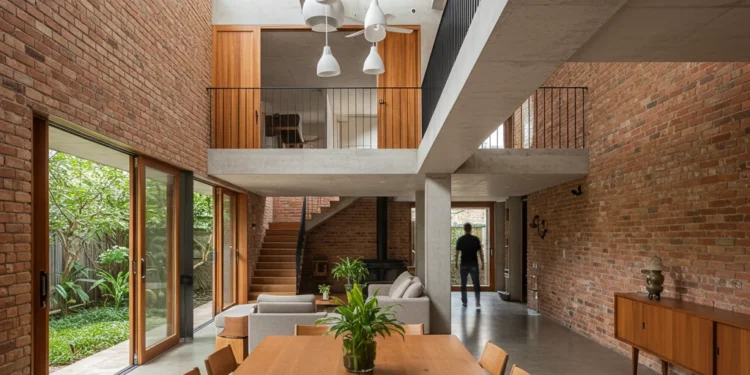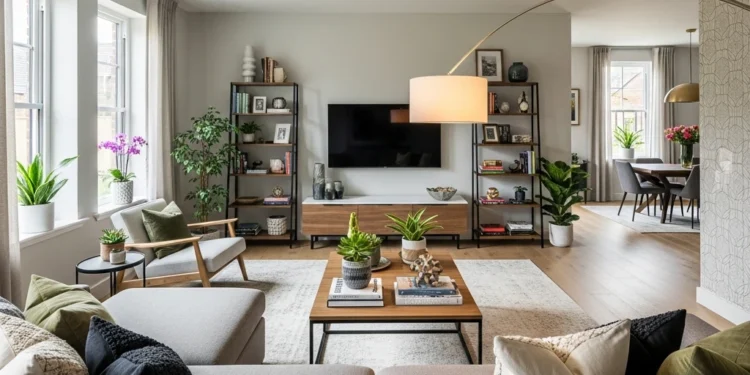When a developer decides to build a new property, they’re not just creating a structure; they’re making a massive financial bet. One of the biggest gambles is on architectural style. Will a sleek, modern design appeal to buyers in this neighborhood, or will a cozy farmhouse look be the one that sells out first? For decades, this has been a matter of gut feeling, market experience, and a roll of the dice. But the landscape has changed. Now, real estate rendering companies are providing a powerful tool to take the uncertainty out of the equation. By using real estate rendering for A/B testing, developers can now de-risk their investment and ensure their projects are designed to meet the exact desires of their target market before a single brick is laid. This strategic use of technology is revolutionizing the industry, turning a high-stakes gamble into a data-driven decision.
The High Stakes of Architectural Style
The aesthetics of a property are a huge driver of its market value and appeal. A beautiful, well-designed home can sell quickly and at a premium, while a house with a mismatched style can linger on the market, costing time and money. The problem is that what’s popular in one area might be a bust in another. A developer might be convinced that an industrial, minimalist loft will be a hit, only to find that the local market prefers a more traditional look. It’s like a clothing designer creating an entire collection without ever knowing their customers’ preferences. Without honest feedback, you’re relying on a hunch, which is a dangerous way to do business when millions of dollars are on the line. The wrong architectural choice can lead to a sluggish sales cycle, expensive marketing corrections, and a project that underperforms its full potential.
What is A/B Testing in Architecture? The Scientific Approach to Design
So, how do we solve this? We use the scientific method. A/B testing, a common practice in digital marketing, involves showing two versions of something to different groups of people and seeing which one performs better. Thanks to 3d rendering real estate, we can now apply this same rigorous process to architecture. The idea is simple: a developer can create two distinct visual versions of the same property. One version may feature a classic red-brick facade with a pitched roof, while the other shows a flat-roofed, minimalist design with floor-to-ceiling windows. These two real estate rendering variants can be put to the test, allowing you to see which one resonates more powerfully with your potential buyers. This is a game-changer for anyone involved in design or development.
The Anatomy of a Render-Based A/B Test
Breaking down an A/B test is a straightforward process when you have the right tools. The variables you can test are endless. You should see if buyers prefer a rustic, exposed-beam ceiling or a clean, modern one, or if they’re more drawn to a lush, traditional garden or a low-maintenance, drought-resistant landscape. The key is to change only one variable at a time to get a clean result. For instance, if you’re testing the exterior, the interior real estate 3d rendering should remain the same for both versions. You can then show these renders to targeted online groups, run social media ad campaigns, or even hold virtual focus groups to gather feedback. The data you get from a real estate rendering company provides you with tangible, quantifiable evidence of what your market wants.
Key Benefits: Why Smart Developers Are Using This Strategy
The advantages of this strategic approach are incredibly compelling for any developer or real estate professional. This is no longer just about creating pretty pictures; it’s about making more intelligent business decisions. The benefits go straight to the bottom line, impacting everything from your initial investment to your final profit margin.
- De-Risking Investment: Confirm a design’s market appeal before construction to avoid costly mistakes, protecting the project’s profitability and giving investors peace of mind.
- Targeted Marketing: Use data from A/B tests to craft more effective and personalized marketing campaigns that speak directly to a proven audience. Your ad spend becomes an investment, not a shot in the dark.
- Maximizing Resale Value: Ensure the final design aligns with what the market is willing to pay for, potentially leading to a higher sales price and a faster sales cycle.
- Enhanced Client and Investor Confidence: Provide tangible, data-backed evidence that a design choice is the right one, making it easier to secure funding and sell a vision. A property 3d rendering can be used as a tool to convince stakeholders.
Case Studies: From Gut Feeling to Data-Driven Success
Consider a developer planning a new luxury housing community. Their gut feeling was to go with a sleek, minimalist style that was popular in other cities. However, they decided to be cautious and used 3d rendering for real estate to create two versions: the modern design and a more classic farmhouse aesthetic. They ran a targeted ad campaign on social media showing both versions to residents. The results were precise: the farmhouse design had a significantly higher click-through rate and received more engagement than the modern one. The developer switched plans, and the homes sold out quickly at a higher price than initially projected. In another example, a commercial developer was unsure about the interior layout of a new co-working space. They used interior rendering for real estate to create three different designs—a traditional open-plan space, a more partitioned layout with private offices, and a hybrid model. A survey of potential tenants using these 3d renderings for real estate revealed a strong preference for the hybrid design, allowing the developer to build exactly what the market wanted.
Choosing the Right Rendering Partner for Market Research
This isn’t just about finding a real estate rendering company that can create pretty pictures. It’s about forming a strategic partnership. You need a company that understands the business side of real estate 3d rendering services. When searching, review their portfolio to see if they have experience producing multiple design variants of a single property. Can they handle the technical complexity of A/B testing, ensuring that only the chosen variable is changed? A professional 3d rendering real estate provider understands that their work isn’t just a creative output but a crucial part of your market research. Their ability to deliver on this promise is what separates them from a standard vendor.
Conclusion
In a market where every decision carries significant financial weight, relying on instinct is no longer a viable strategy. The advent of real estate rendering services has changed the game, turning architectural and interior design into a data-driven science. By using the principles of A/B testing, developers and designers can eliminate the guesswork and make choices based on solid evidence of what their target audience truly wants. This approach not only minimizes risk and maximizes profit but also creates better, more desirable properties for the end user. It’s a powerful new paradigm, proving that intelligent design isn’t just about creativity; it’s about using the right tools to build exactly what the market demands.












